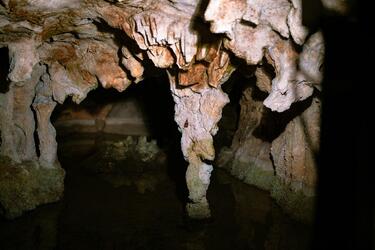The most toxic in the world: a famous biologist told about a unique cave in Romania

Signs of life can be found even in the most extreme corners of the Earth. Some creatures survive in places where existence seems impossible.
One of these unique places is the Romanian Movile Cave, which evolutionary biologist Scott Travers described in his column for Forbes.
For more than 5 million years, this cave remained completely isolated from the rest of the world, hidden under a layer of limestone and clay. Sunlight has never penetrated its depths, and the air consists of a poisonous mixture of toxic gases. Most organisms could not survive there for even a few minutes. However, despite these harsh conditions, the cave is home to a unique ecosystem that functions through an unusual mechanism.
The cave was accidentally discovered in 1986 when Romanian workers were looking for a place to build a nuclear power plant. Geologist Cristian Lascu, who was the first to descend into its depths, found an intricate system of tunnels leading to an underground lake, the surface of which was covered with thick microbial foam.
Unlike most ecosystems that rely on solar energy, life in Movile is sustained by the process of chemosynthesis. The bacteria living in the cave use chemical reactions to generate energy by oxidizing methane, ammonia, and hydrogen sulfide. They create the basis for the entire ecosystem, providing nutrients for other organisms.
Descending into the cave is a difficult and dangerous test. The level of oxygen inside is only 7-10% (for comparison, in ordinary air this figure reaches 21%), and the concentration of carbon dioxide is 100 times higher than the surface level. In addition, the air contains hydrogen sulfide, a gas with a pungent rotten egg smell that can cause respiratory failure in large doses. The water in the cave is also unsuitable for most organisms: it contains almost no oxygen, but a lot of toxic compounds.
Despite this, Movile is home to more than three dozen unique species of invertebrates that cannot be found anywhere else in the world. Among them are spiders, leeches, millipedes, pseudoscorpions, and isopods that have evolved in complete isolation over millions of years.
Due to the extreme conditions, only a limited number of scientists have access to the cave. This is necessary not only for their safety but also to preserve the delicate balance of this unique ecosystem.
If you want to get the latest news about the war and events in Ukraine, subscribe to our Telegram channel!
